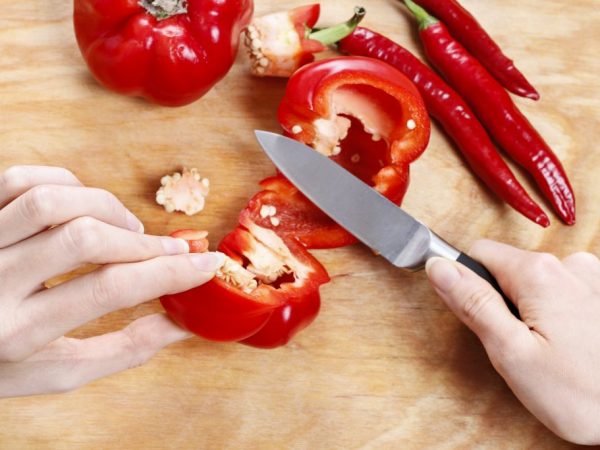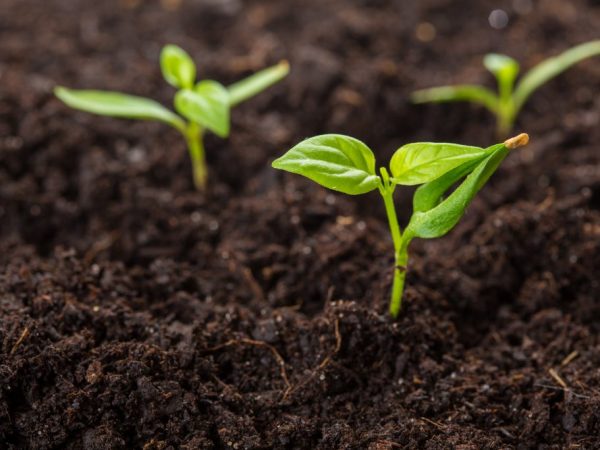The best pepper seeds for Siberia
Pepper seeds for Siberia differ in ripening time and are ideal for cold climates. They are divided into mid-maturing and early-maturing. Consider the best pepper seeds for Siberia.

Pepper seeds for Siberia
Open ground varieties
The best pepper varieties for Siberia that are suitable for growing in open ground are Ivolga, Golden Pyramid, Topolin, Veselinka, Bychok, Morozko, Kavaler, Valenok, Merchant, Kolobok, Siberian Prince, Pervenets of Siberia, Bogatyr, Dakar and Triton.
Oriole
According to the characteristic, it is a yellow variety with a high yield. It can grow up to 10 kg per 1 m² and reach a weight of 75-90 g, but the sweet taste and aroma compensate for the small size.
This is a mid-early variety. Less than 120 days pass from the day of sowing to the ripening of the first fruits. It is unpretentious and well suited for a cold region, as it ties well in low temperatures and poor lighting conditions.
Topolin
Red bell pepper with large fruits. Its yield is high, approximately 45-50 t / ha. The fruits of this variety differ in weight of 140-170 g, at least one pepper ripens 100-110 days after planting.
It is a disease-resistant plant, which is why it is very popular in the West Siberian region.
Siberian prince
The name of this plant speaks for itself. According to the characteristic:
- fruits ripen 110 days after planting;
- the variety is resistant to stressful conditions;
- fruits weigh up to 160 g;
- the variety has a low yield: about 4-6 kg per 1 m²;
- the variety has excellent taste and juiciness.
Firstborn of Siberia
The sweet red or yellow Firstborn of Siberia can reach 50 cm in length. The plant is immune to almost all viruses.
Fruit weight - on average 60 g, length - 10-12 cm. Planted seeds of a sweet vegetable give the largest fruits in just 100 days and in a volume of 4-5 kg / m².
Bulls
Red, yellow and orange varieties of peppers for Siberia have a bright color and huge size, in connection with which they got their name. Of course, these are not ultra-early varieties, but they still ripen in 90-105 days. This Siberian bush is very unpretentious and has an average fruit weight of about 200 g, in some cases the Red Bull has a weight of 400 g.
The length reaches 25 cm, and the yield is 8-10 kg / m², which is considered a good indicator. The varieties are also very well suited for the Urals, growing in this area will not cause problems.
Greenhouse varieties
The best varieties of peppers for Siberia in greenhouse conditions are Korenovsky, Kupets, Belozerka and Casablanca.

We plant seedlings in a greenhouse
Merchant
According to the description, this Bulgarian shrub in greenhouse conditions matures in about 70 days. The weight of one fruit is 70-80 g, which is considered an average. The red pulp has a beneficial bonus as it is high in vitamin C.
Such a plant is perfect for both open ground and greenhouses. The yield of bell peppers in Siberia is small: only 3-4 kg per 1 m², the shrub is suitable for the cold land of the Urals.Due to the uniqueness of the plant, after the greenhouse, you can safely transplant it into the garden in the open ground.
Variety Korenovskiy
This variety ranks first among the varieties of peppers for Siberia, created specifically for greenhouse soil. A mid-season plant ripens in 4 months. The rather large and heaviest fruits of the bush can weigh up to 170 g.
A juicy Siberian variety can be stored for a long time without loss of taste and appearance, but these plants are not very productive: only 5 kg / m².
Belozerka
This pepper is white in color. The height of the bush is up to 75 cm, the mass of ripe fruits is up to 100 g.
The early fruits of this plant ripen within 100-120 days. The white pulp is saturated with juice and sugar, and the aroma is considered one of the best among all varieties of peppers for Siberia.
Casablanca
An early ripening hybrid of sweet pepper, the seeds of which bear fruit within 80-90 days after planting on the ground of the cold Siberian region. The variety is mainly suitable for greenhouses, not cold ground, and changes from green to orange as it matures.
Large fruits grow too close to each other, so a few bushes are enough for a large harvest.
Diseases and pests
Despite the fact that many varieties of peppers for Siberia are easy to care for, they can still be exposed to diseases or some pests.
Rot is considered the most popular disease for open and closed ground, and aphids are considered a pest. Slugs, the Colorado potato beetle and the bear also cause great damage to the pepper. Among the common diseases of peppers are late blight, septoria and black leg.
Serum helps with aphids. In order to prevent a bear against an hour before disembarkation, the holes are poured with water. It is necessary to pollinate plants with wood ash from pests 3 times during one season.
Conclusion
Before deciding which pepper seeds can be planted in Siberia, it is important to understand that even the most unpretentious varieties will give a poor harvest if care does not meet the standards. To prevent this from happening, it is necessary to study in more depth the early varieties of pepper for Siberia and care for it.


